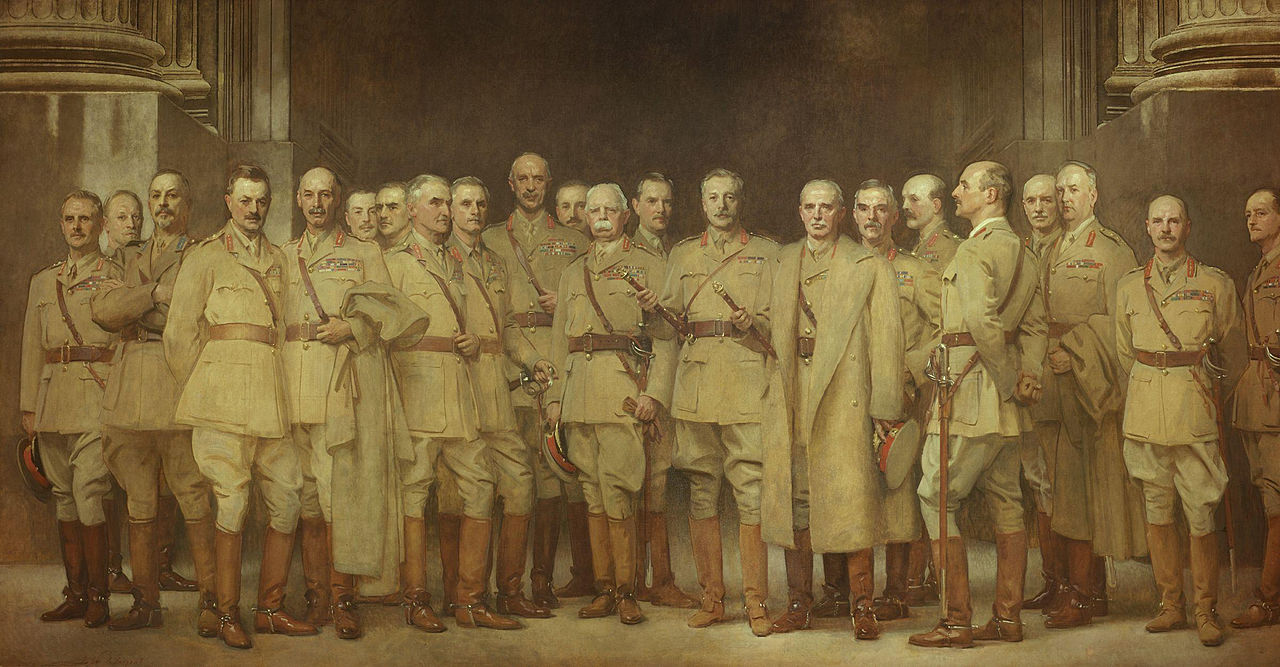
General Officers of World War I by John Singer Sargent, 1922
This post is sponsored by Helion
The arc of British military thought between 1900 and 1918 remains a concept that deeply intrigues military historians. For the fighting units on the ground, Field Service Regulations (FSR) didn’t just suggest appropriate tactics—they defined them, dictating the very evolution of how the army fought. In his book, The Doctrine of the British Army, David Keable-Elliott seeks to explain how this fundamental process unfolded across every Western Front battle, under both French and Haig. This key piece of doctrine has been overlooked for far too long. Between 1909 and 1914, the British Army transformed into a modern, professional force, establishing a flexible doctrine within a rigid framework that, ultimately, led to victory in 1918. Keable-Elliott’s work restores the Field Service Regulations to their rightful place at the centre of the British Army’s story.
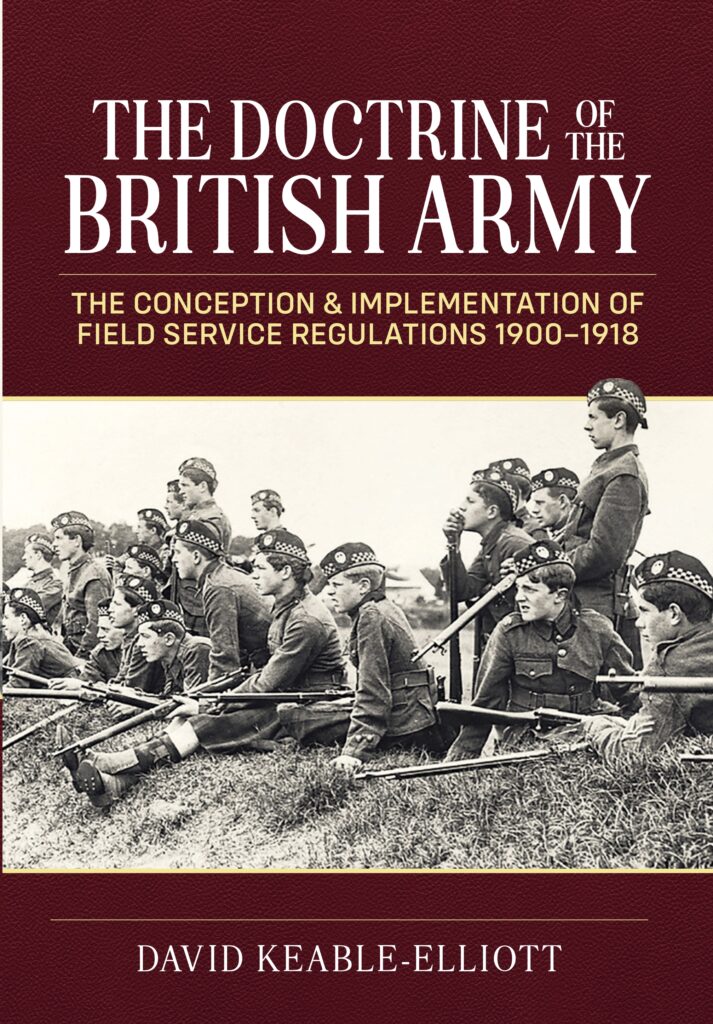

The Doctrine of the British Army and its author, David Keable-Elliott (Images: David Keable-Elliott)
That’s why The History Avenue sat down with David Keable-Elliott to discuss his book, the doctrine, and its enduring influence on the past and present. He was astonished at the academic silence on the subject.
THA: You’ve written the book on the doctrine of the British Army. What inspired you to explore this topic, and why did you feel it was important to write this book now?
I have been writing on, and studying, the First War for ten years now. My first book was The Young Gunner, published in 2016, under my mother’s maiden surname, David Hutchison. This involved editing the First War letters of her father, my grandfather, who served in the front line artillery from Mons in 1914 to the Armistice. I wrote this book without studying the war – I wanted his voice, not echoes of mine, or of others. By the time I completed it, I knew he and his fellow officers were following a doctrine, which was often at odds with that of their generals. He was only a 21-year-old subaltern in 1914. So I started to read up on what this doctrine was, what he and his colleagues had been taught before the war. I was astonished to discover how little there was in academic books and papers on the subject. I was being advised that the British Army had no formal doctrine in 1914. The material that I unearthed in primary sources soon convinced me that it did, and I knew then that I was writing a book that would challenge both historic and contemporary narratives. I did not realise then just how important a book I was writing.
Challenging the Haig Myth
The doctrine his grandfather and his fellow officers adhered to was often in direct opposition to that of their generals. Yet, for years, many historians considered it unnecessary to address the FSR as a separate entity.
THA: How has this doctrine influenced historians? Are opinions divided among scholars, and if so, what are the main points of contention?
There is no dispute that a set of documents, entitled Field Service Regulations (FSR), was published in 1909. Partly because its global content has never been academically analysed, few historians recognised that FSR constituted a set of codified principles that standardised command, logistics, and operations across the entire army – in other words, that it imposed a doctrine on the pre-war army. Even fewer historians recognised the impact of this doctrine on the British army once the war started in 1914.
Instead, most historians followed an alternative, and wholly erroneous, narrative. This postulates that Douglas Haig was the man who edited FSR for publication while working at the War Office from 1907, and that he was then responsible for its implementation in 1909. It is then alleged that its detailed principles were never fully embedded into the psyche of the army and did not survive the transition to war, in particular, trench warfare. Many of Haig’s biographers go on to assert that he carried the ideas in it forward into the war and developed them to achieve victory. Given that these ideas are attributed to Haig, it was seen as unnecessary to address FSR as a separate entity. Even in studies of command or tactics, there are very few references to FSR, though Haig is repeatedly mentioned. Except in studies of administrative process, far too many historians have elected to ignore FSR and its doctrinal impact altogether.
‘A few weeks’ work in military archives made it clear to me that Haig had no perceptible influence on the preparation of FSR and, furthermore, that he actively ignored much of its teaching once it was published.’
The narrative described above was developed as a direct consequence of a surge in popular revulsion at the murderous attritional warfare of 1915, which was sparked in the 1960’s, first by a book The Donkeys (Alan Clark 1961), and then by a stage and film production Oh! What a Lovely War! (1963 & 1969). Both of these lampooned and denigrated Haig, blaming him for the carnage. Convinced of Haig’s tactical genius, a group of historians leapt to his defence and generated this alternative narrative to improve his intellectual reputation, though it is supported by embarrassingly little evidence. Quite why this narrative has proved so durable is difficult to understand. A few weeks’ work in military archives made it clear to me that Haig had no perceptible influence on the preparation of FSR and, furthermore, that he actively ignored much of its teaching once it was published. These are not comfortable facts for those senior historians whose work and teaching have, for far too long, asserted that his tactical ideas, and those of the army in general, were one and the same. My work also demonstrated that a host of prominent WW1 generals did contribute to, and largely adhere to, FSR, and were therefore at odds with Haig throughout the war. None of the main biographies of senior generals mention their pre-war work on FSR, or even FSR itself, attributing important divergence in tactical thinking to personal failings on one side or the other.
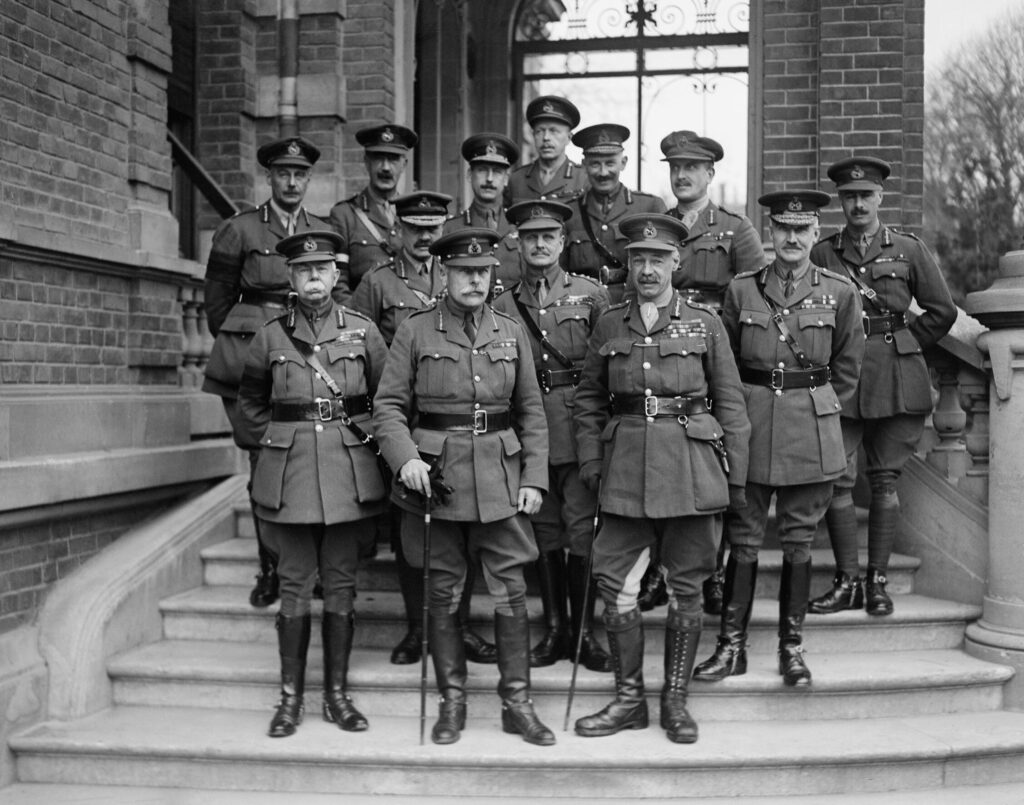
It is time now for a complete re-evaluation. Nobody has attempted to rebut my revisionist academic paper (2023) published in America, which separated the principles of FSR from Haig’s opinions, emphasising the differences between them. Two of Haig’s biographers have now accepted that they were wrong to credit Haig with writing FSR. Some very competent amateur historians, linked to First War societies, have already embraced my new narrative; as quietly have some senior academics.
Doctrine, Not Chaos
As Mr. Keable-Elliott points out, the publication of FSR was a seismic event. It led to the professionalisation of the British Army—a process that would continue throughout the twentieth century. His book fundamentally rejects the assumption that the British army of 1915 had no doctrinal focus.
THA: In what ways does your work enrich or challenge our understanding of British Army history?
The British Army before 1909 had no uniform doctrine. There was guidance for individual arms, but no joined-up thinking. This is a difficult concept, particularly for those with a military background who have never been without one. The publication of FSR imposed one for the first time in its history, a seismic event, which led to the professionalisation of the British Army in a process that continued throughout the Twentieth Century. Most First War historians have worked on the assumption that the British army of 1915 had no doctrinal focus, only developing its ideas on combined tactics, that is combination of infantry, artillery, engineers and cavalry, from lessons learnt at the Somme. (This is the essence of the Learning Curve theory, which my book rejects.) My work suggests that the British army of 1914 had a strong doctrine, that regular army officers of 1915 continued to observe many of its strictures, albeit handicapped by shortages and the lack of training given to a rapidly expanding army staffed by amateurs. On occasions, these regular officers were prevented from following FSR principles by orders from above. A few senior generals, of whom Haig was the most significant, rejected some of the major principles these officers wanted to follow.
My work argues that all regular army officers from 1914 to 1918 were aware of FSR even if they did not, or could not, follow all the detail in it; that the main principles of the doctrine were persistently advocated by an articulate faction within the senior ranks of the army in the middle years of the war despite their rejection by Haig and others; and that, by late 1917, this faction had prevailed. The army had become more professional and this enabled the main principles of FSR to be re-adopted, and followed, by most of the army, as closely in 1918 as they had been in 1914.
‘It does not advocate attrition. It rejects the concept of a general issuing orders based on his own observations, necessarily limited in large conflicts.’
Keable-Elliott notes that FSR requires a general to act only after receiving collated intelligence reports from his staff on all relevant issues.
THA: Your book examines how Field Service Regulations shaped tactics. What would you say were the most significant changes introduced by these regulations?
FSR (1909) was about much more than tactics in that it defined command structures and logistical administration in great detail. And it was written to avoid disaster as much as to achieve success. It does not advocate attrition. It rejects the concept of a general issuing orders based on his own observations, necessarily limited in large conflicts. He is required to act only after receiving collated intelligence reports from his staff, on all relevant issues, and performing assessments of risk. Once issued, his orders should be both brief and measured, allowing his subordinates time to carry out his intent, using FSR as a guide to local tactics.
The most important operational principle is combined infantry/artillery at every stage of battle, which requires robust liaison arrangements at all levels of command, and a measured step-by-step approach. Single-arm offensives against an all-arms enemy are forbidden, even with a view to breakthrough. In addition, the unit of battle should be the division, which should be allowed to control all the necessary resources, including artillery, to achieve its nominated objectives. Defence should always be in depth; flanks should always be covered. Valueless outposts should be abandoned. Every officer, however junior, is responsible for the training and protection of his men, and for taking precautions against surprise.
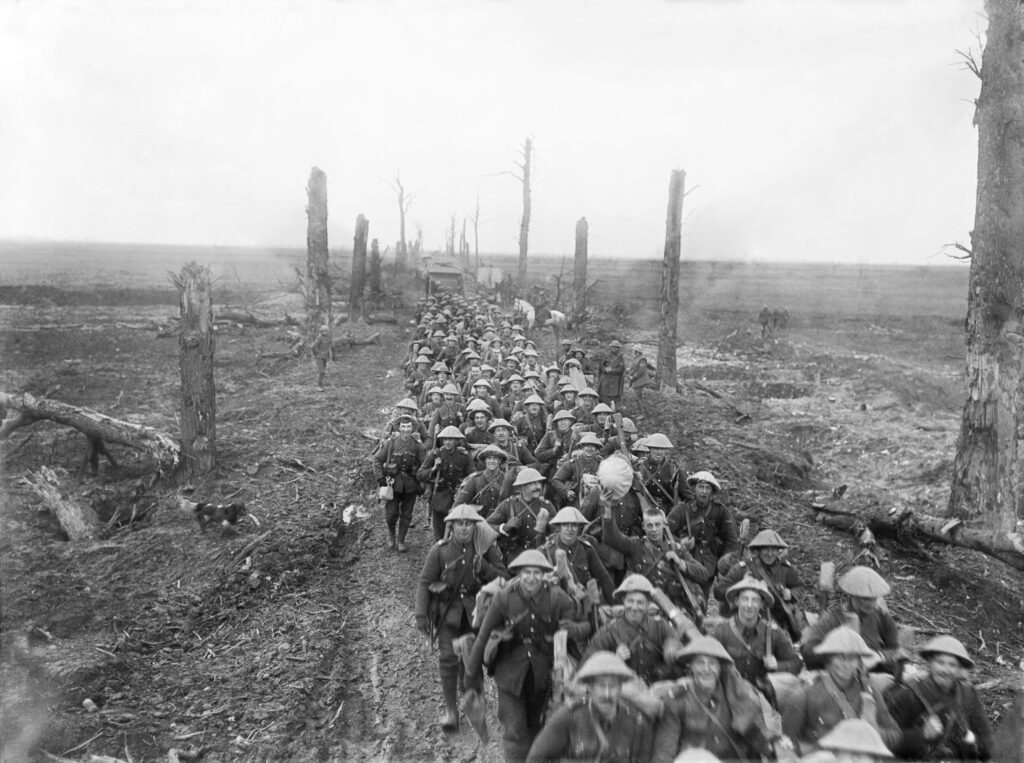
THA: How did those changes affect the British Army in practice?
Generally very positively in the pre-war period. The training given to every young officer became uniform, regardless of arm. Routines were standardised, sanitation imposed. The artillery and engineers were absorbed into the divisional structure. Subordinate officers welcomed brief orders which enabled them to tailor their dispositions to terrain and enemy threats. Command structures were clarified, and administration and logistics were efficiently standardised. The main difficulty was with the cavalry, who were slow to adopt a practical staff structure, and some of their senior generals were unhappy that they were no longer regarded as an independent single arm strike force.
During the war, there were a number of factors which stressed FSR principles. Some felt that the corps should be the basic fighting unit, since that allowed the artillery to be managed more efficiently. Trench warfare, especially where the troops manning them were raw, mitigated against the principle of defence in depth. Liaison at sub-divisional level, and even elementary precautions against attack, suffered from the inexperience of newly arriving troops. Some senior officers failed to require reconnaissance or adequate infantry/artillery combination before ordering attacks. There was also much debate, guided by doctrinal principles, on how to incorporate new problems or new solutions into the baseline structure of the army and its command. Massively increased artillery, the concept of air supremacy, gas warfare, tanks, advances in communication and other technologies all had to be incorporated, both operationally and administratively into a structure determined by FSR. The administrative regulations, drafted before the war, proved remarkably suitable, with a combination of rigidity and flexibility, in facilitating the successful integration of these new ideas and technologies.
Training, Tactics, and Transformation
These regulations weren’t static; they actively guided the evolution of fighting units over time, beginning at the very outbreak of war.
THA: Can you speak to the ways in which the regulations guided the evolution of fighting units over time?
In terms of readiness for battle, this was by no means uniform, since the ethos of every unit was affected not only by the competence and views of their immediate commanders, but also by that of their generals up to army level. Nevertheless FSR was the handbook used throughout the war for basic training, and it was also used as the main text in all revision courses. Almost all these courses were run by regular army officers and generally they emphasised the importance of infantry/infantry and infantry/artillery liaison at sub-divisional level, together with the concept of junior officers taking responsibility for the protection and local tactics of their men. Not all senior officers allowed these ideas to be put into practice – generally to their detriment. The regular army divisions generally maintained their professionalism, and adherence to FSR, despite their huge casualties, because devolved planning, reconnaissance, infantry/artillery combination and limited objectives worked, as a local strategy. The professionalisation of other divisions into 1918, as defined by FSR, depended largely on their commanders. Returning to the administrative regulations, these allowed a surprising flexibility in the basic organisation of all units down to platoon level; to incorporate greater use of existing weapons, such as machine guns, and to facilitate the introduction of new weapons, ranging from hand bombs to tanks. The administrative evolution of fighting units, responding to new developments and guided by FSR, was on-going, starting at the outbreak of war.
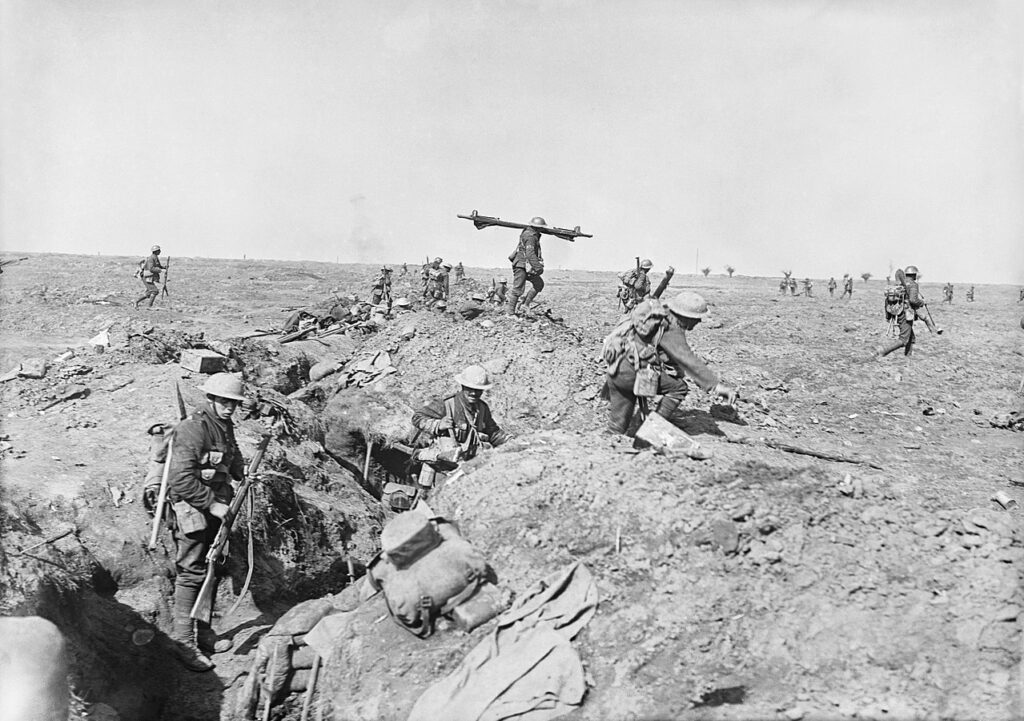
THA: Lastly, what legacy does this doctrine hold—how did it contribute to the formation of the modern British Army?
There are others far better qualified than I to answer this very pertinent question. FSR was re-written by JFC Fuller and others after the war. Many historians have argued, even very recently, that Field Service Regulations (1909) did not constitute a doctrine in 1914. I can only rest my case, and allow others to debate the many questions my book raises.
